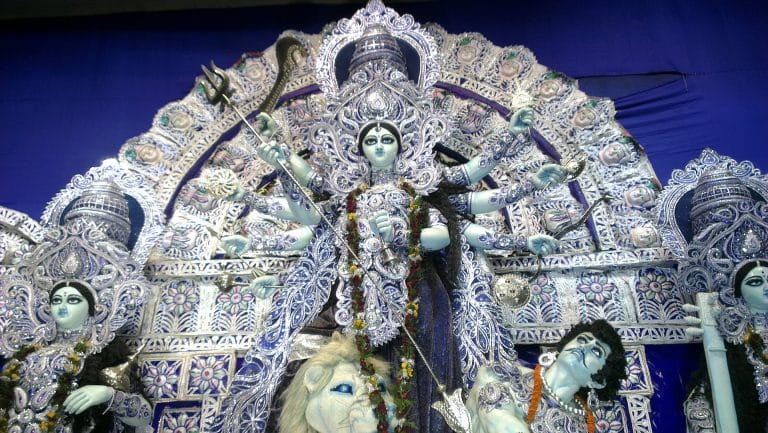
Bengal’s love for cinema and literature have been brought before the world by legendary icons Satyajit Ray and Rabindranath Tagore. However, if one wants to experience Bengal’s equally famed love for food, there is no better place to be than in the capital city of Kolkata during their beloved Durga Pujo.
This festival of Goddess Durga had initially began as a purely religious celebration in 1901. Today it is a reflection of Bengal’s beliefs, traditions, intellect and has been recognized by the UNESCO as an Intangible Cultural Heritage. While Durga Pujo can not be solely called a food festival, it encompasses within itself the oldest and the biggest food festival of the state of Bengal.
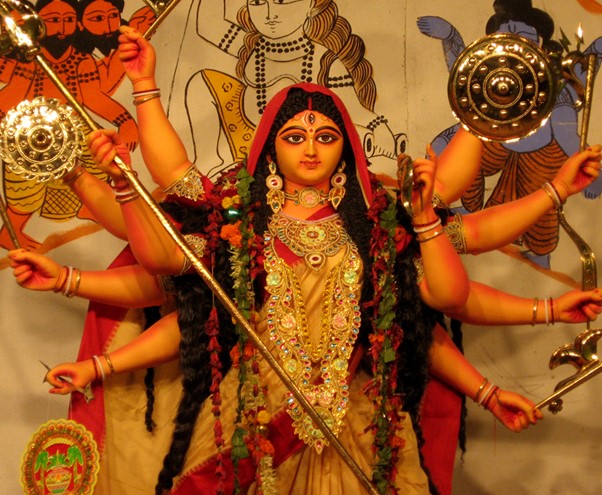
To put matters into perspective, the celebration is not conducted in a limited space. The entire state of West Bengal is adorned with lights, and “pandals” are constructed in every block to host the idol of the Goddess. Since pandals express Bengal’s creativity, every year a sweet cultural battle takes place to decide which block has built the most awe-inspiring pandal for the Goddess. Leaving aside the main roads where traffic is regulated, one can hardly walk two steps before finding temporary stalls of food, each selling a different variety of lip-smacking delicacy.
The reason being Bengal, especially Kolkata, itself turns into an art exhibition due to the creativity of the pandal designers. People flock the streets as they “pandal-hop” from one pandal to another even in the odd hours of the night.
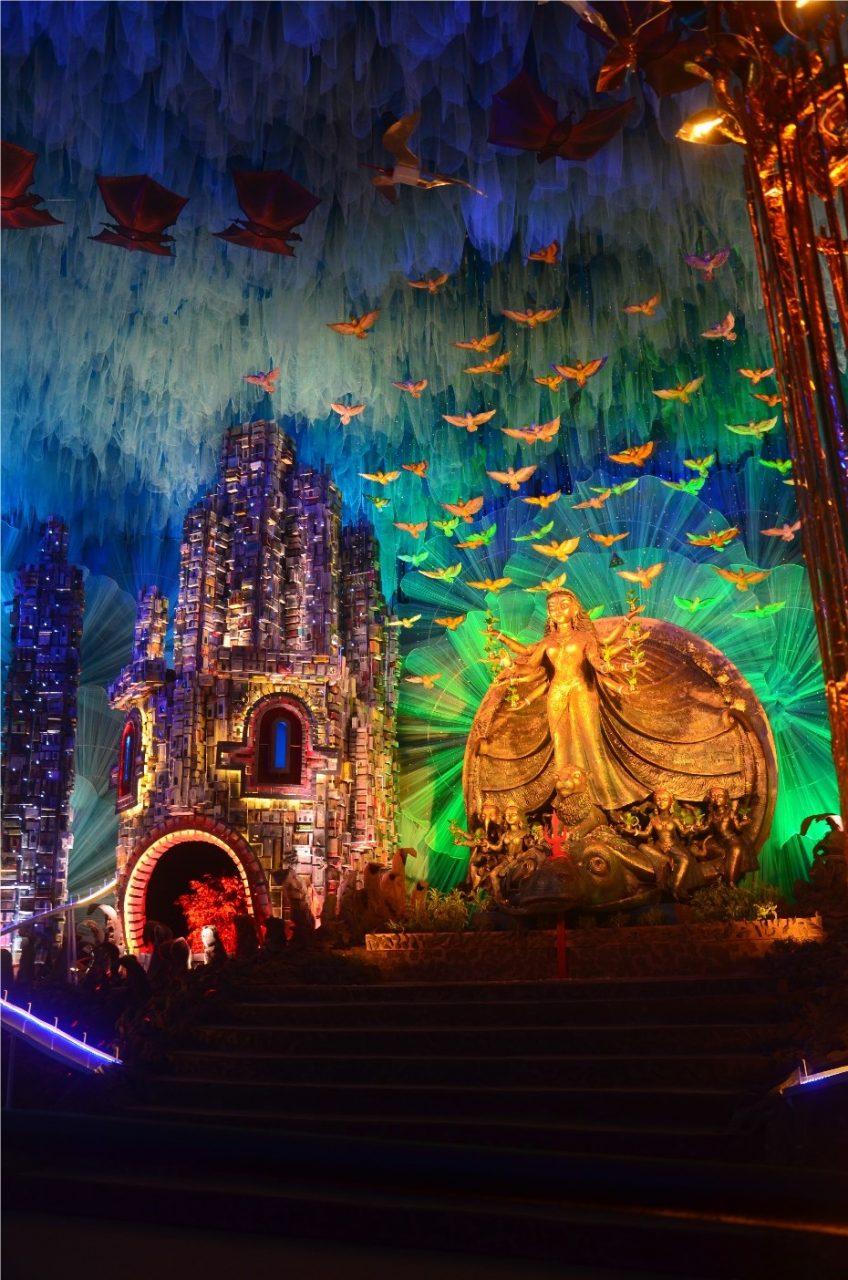
The ad-hoc food stalls are set up not only around the pandals but even on pavements throughout the city to satisfy the appetite of the crowds who have been outside their homes for hours trying to figure out which pandal mesmerized them the most. Most stalls remain open for all 24 hours in the last 4 days of this 10-day celebration. The economy created around this festival is equal to $4.53 billion and is often compared to that of Rio de Janeiro’s.
Bengal’s street food is just as diverse as their traditional main courses and desserts. The most popular and easily available street dishes in this annual Kolkata food festival are Phuchka, Kathi Rolls, and Fish Fry. Phuchka is a timeless street food and is an absolute favorite of all age groups and social classes.
They are deep fried hollow and crispy wheat balls with a simple yet delicious mashed potato filling and is accompanied by spicy tamarind water. It is the most affordable street food dish in Kolkata and is inevitably present outside each pandal irrespective of its popularity and crowd. Fusion Phuchkas are a common sight in international food festivals held in Kolkata. However, during the Durga Puja food festival the traditional and original recipe is followed.
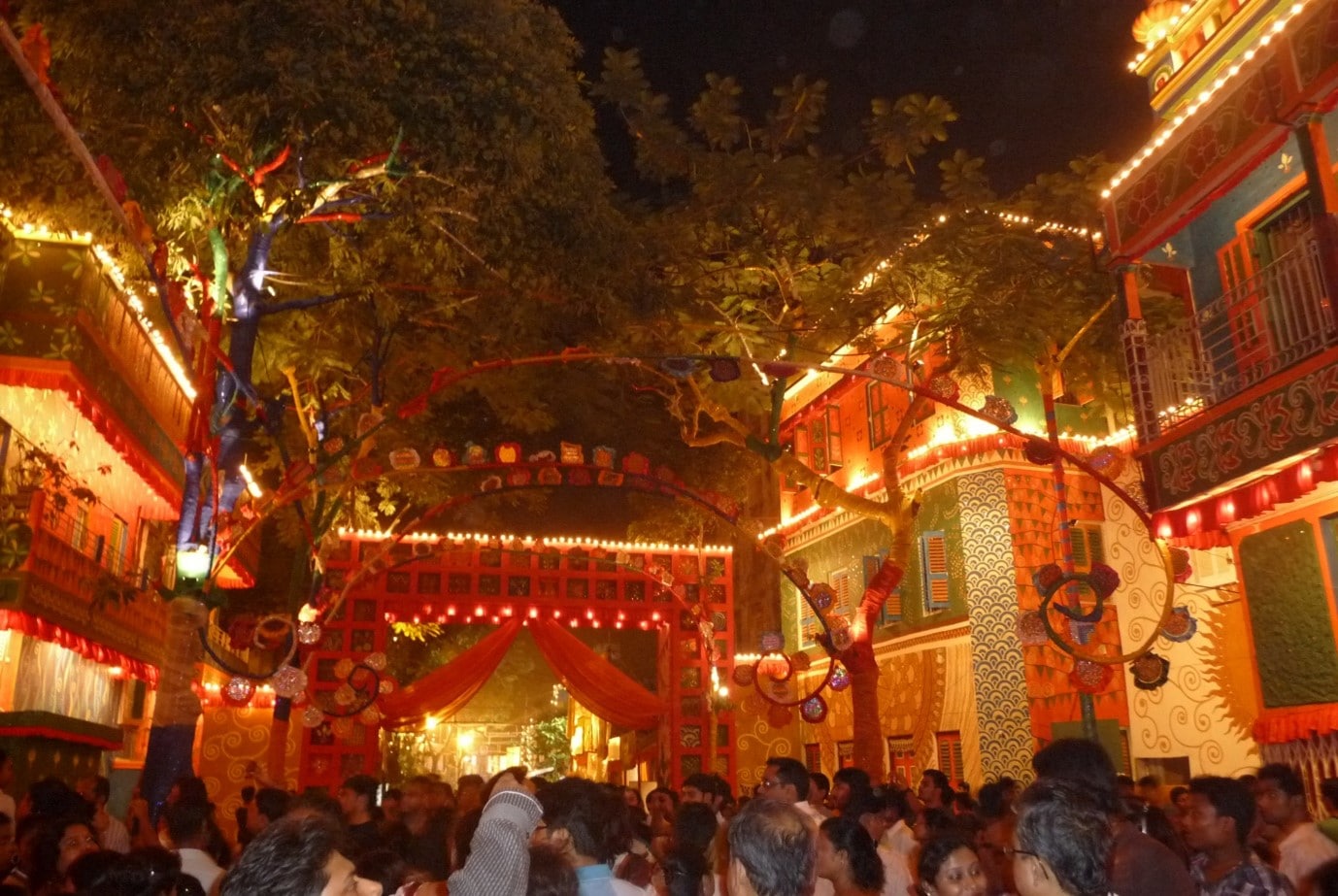
Kathi rolls are prepared by wrapping filling with parathas (a form of round flatbread). The main core of the filling is potato, chicken, mutton, or fried egg and is accompanied by cucumber, onion, ketchup and mustard sauce. When all the elements come together, it gives rise to a savory musical on your tongue. This dish is preferred as an evening snack by students and adults while returning from college or work. The Kathi roll stalls are mostly found along the pavements and are always crowded. It is a convenient choice as it can be enjoyed on the go.
Fish holds exceptional cultural significance in Bengali households and their devotion towards seafood is unparalleled. Fish symbolizes good luck and prosperity and plays a role in certain Bengali ceremonies unlike other Hindu religions in India. The fish fry had its origin during the British era in Kolkata when Bengal’s loyalty towards fish blended with the English culinary style.
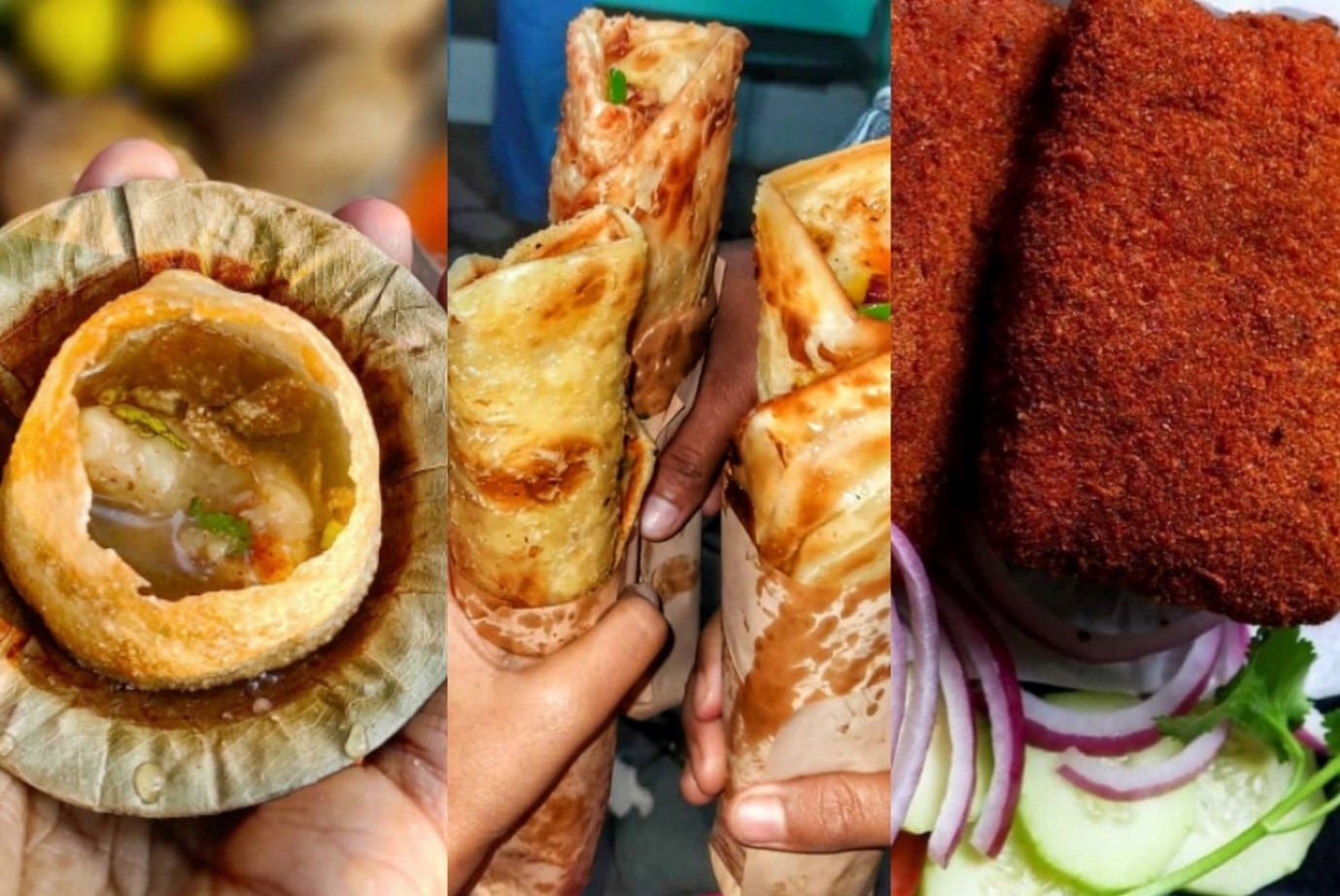
The dish is prepared by marinating a boneless Bhektki fish fillet and then masking it in bread crumbs before deep frying it using a special technique so that the rectangular shape of the fillet remains intact throughout. It is served with salad and mustard sauce. This dish is pricey as compared to Phuchka and Kathi Rolls but is always sold out if you are late to order. Fish Fry is always present in every local food festival in Bengal too.
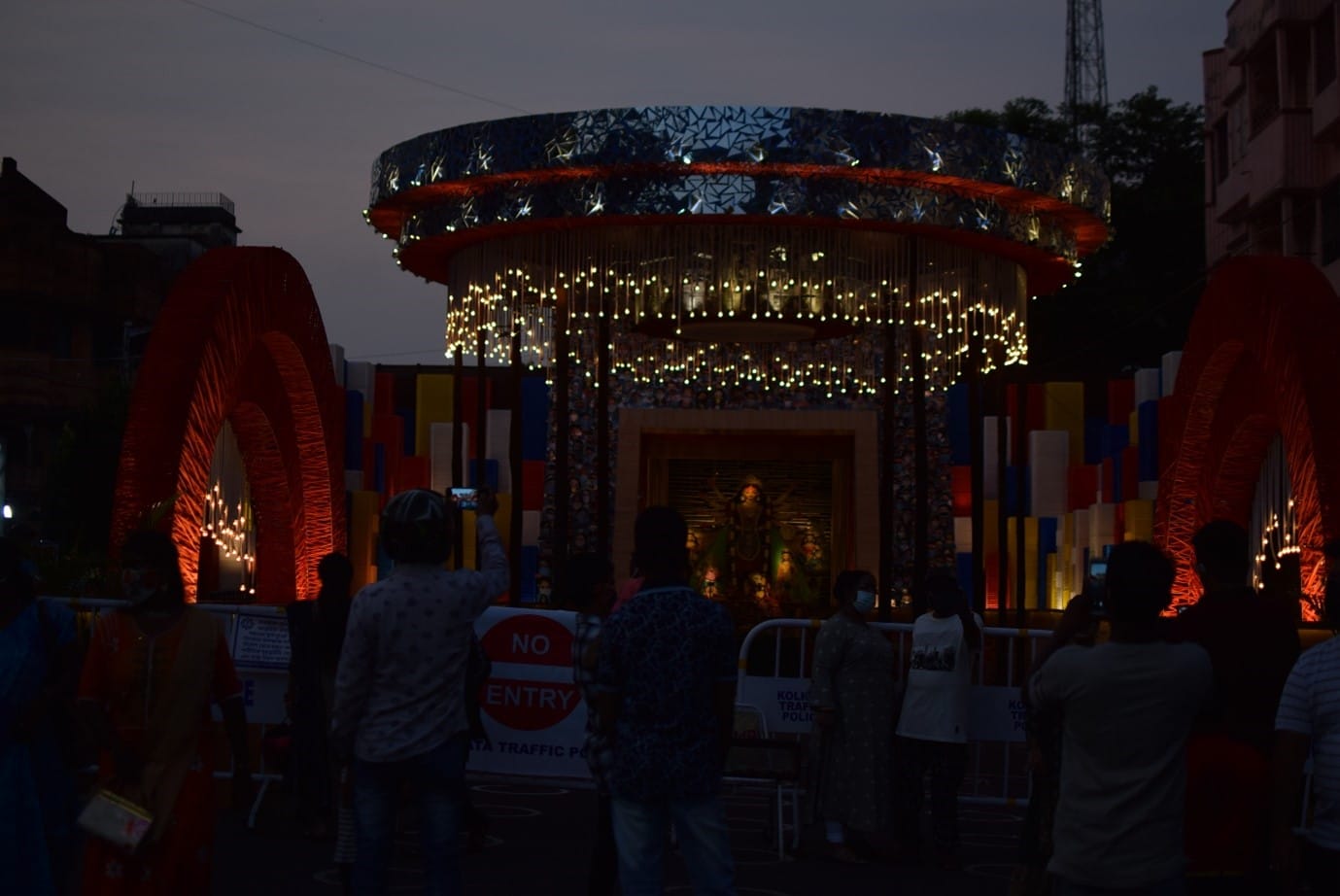
None of the famous food festivals of India can carry on without Biryani and Bengal is no exception. However, the ingredients and taste of Biryani varies state-wise and the debate of which state in India cooks the best biryani is a never ending one. Biryani is a rice-based dish that is cooked with chicken, mutton, or beef. It is rich in flavor and one of the most sought-after dishes in India. The Bengali Biryani is just as flavorful as its other regional counterparts but it is light in texture and comes with a piece of potato and an egg.
The scrumptious soft piece of potato is known to have started arguments amongst peers over its ownership during a shared meal. The preparation of Biryani is elaborate. Even though there are street stalls selling pre-packaged meals, most people prefer relishing the delicacy in established restaurants. This has led to several mainstream restaurants introducing new menus during Durga Puja which sport only biriyani and few other dishes. It allows the chef to focus only on the biryani preparation. More people are satisfied as serving time is lessened and they do not have to wait for long in the queues outside the restaurant.
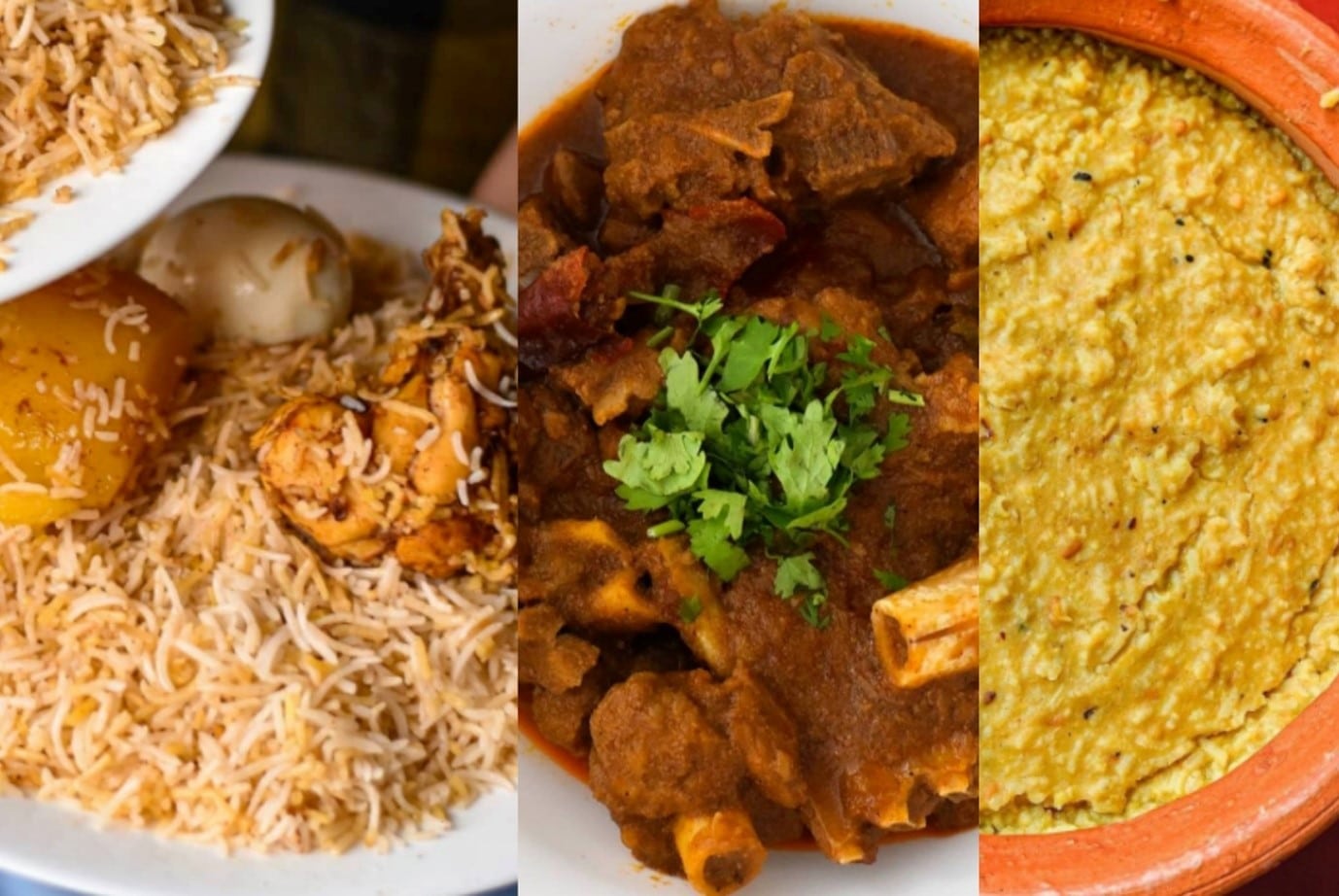
The Bengali Mutton Curry or Kosha Mangsho is a must try for anyone visiting Bengal. It is a traditional dish prepared using the slow cooking method which concentrates on retaining the mutton’s flavor. The spice hits the tongue palate magnificently and when coupled with the tender meat and the gorgeous aroma, it becomes an experience that is hard to forget. Similar to biryani, it is best enjoyed in restaurants due to its cooking method.
It is customary to eat a vegetarian lunch on the 8th day of the festival. The lunch is called “bhog”. Bhog has religious significance and is not served in restaurants. Pandals take initiative on this auspicious day. The main dish in Bhog is Khichuri. It is a one pot traditional meal of rice and lentils. It is not too spicy and is usually accompanied by potato wedges and another vegetarian side dish which differs from pandal to pandal.
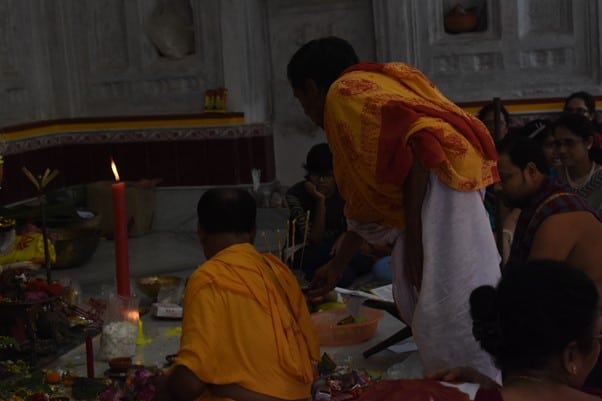
However, if one digs deeper into a hot plate of Khichuri, one will unravel the most intimate Bengali emotions in each grain. This delicacy is a preferred meal served to the ill for their speedy recovery, is unquestionably a favorite during rainy days, and is cooked to celebrate all auspicious ceremonies. It is a comfort meal that is often cooked in every Bengali kitchen and encompasses within itself innocent memories of childhood and the feeling of homely love.
Bengalis know how to end a meal in a correct fashion. Being the Land of Sweets of India, Bengal’s range of desserts is diverse. The top two household favorites are Roshogolla and Mishti Doi. Roshogollas are spongey white curdled milk balls dipped in sugar syrup. This sweet is synonymous with Bengalis.
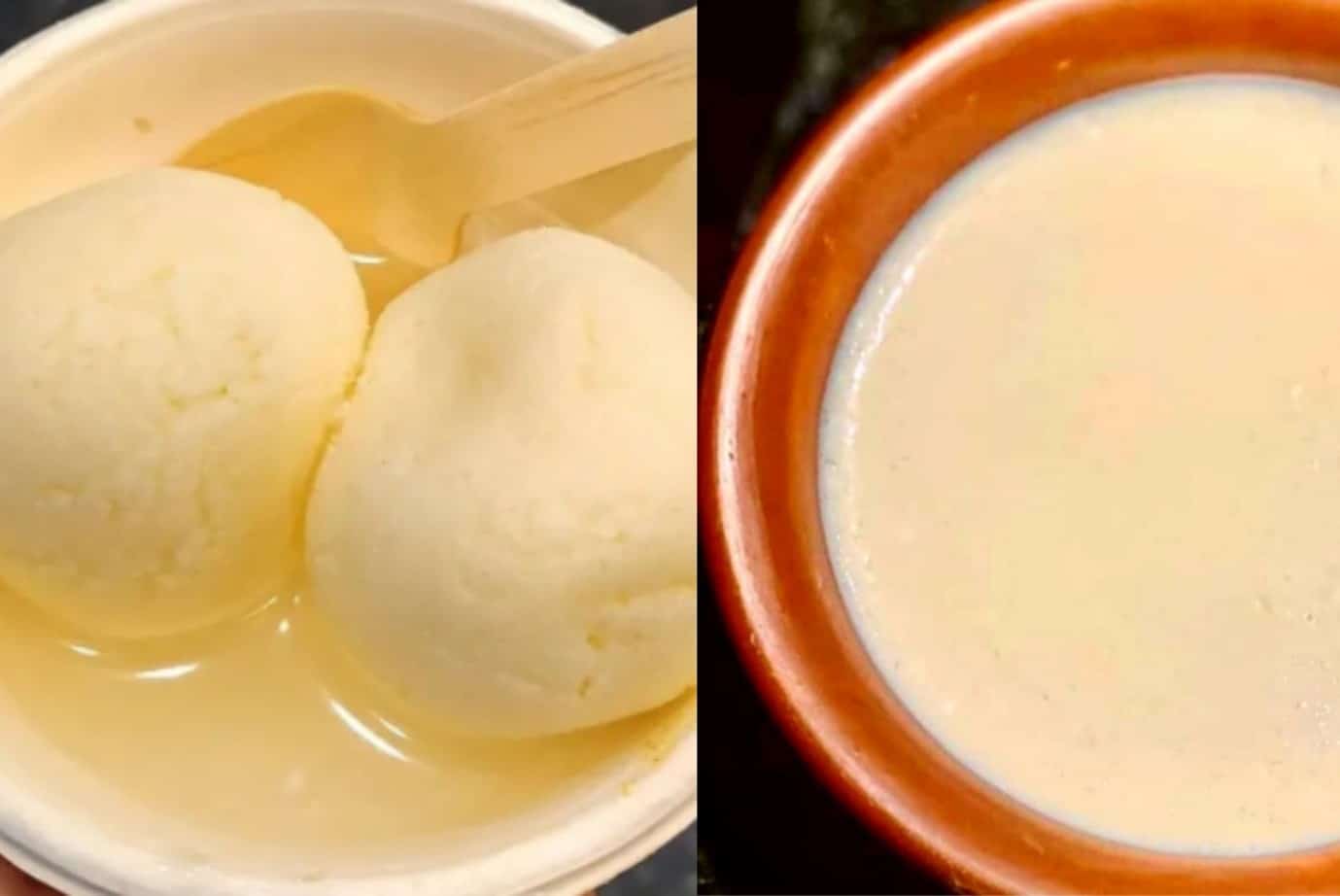
It is a must have in every occasion whether personal, social, or religious. Irrespective of whether it’s breakfast or dinner, this sweet is gladly enjoyed by the people of Bengal after each meal and it is customary to gift a pot of this sweet whenever someone visits their relative’s house. Bengalis finish their celebratory meals with at least two desserts. More options are included if the host is financially strong.
Mishti Doi is basically yoghurt that’s prepared by combining jaggery with milk. It is popular among children as well who accept this as a delicacy that rivals their favorite scoops of ice-cream. However, one should definitely not stop only at these two dishes. Bengal is a gold mine of desserts which has something or the other to satisfy every sweet tooth out there.
The ambience, the cheerful people, the festive decorations, the Bengali pride, makes one taste the celebration of life in every bite one takes in this food festival. Held during the months of September-October, Durga Puja is undoubtedly one of the great Indian food festivals that one could experience.
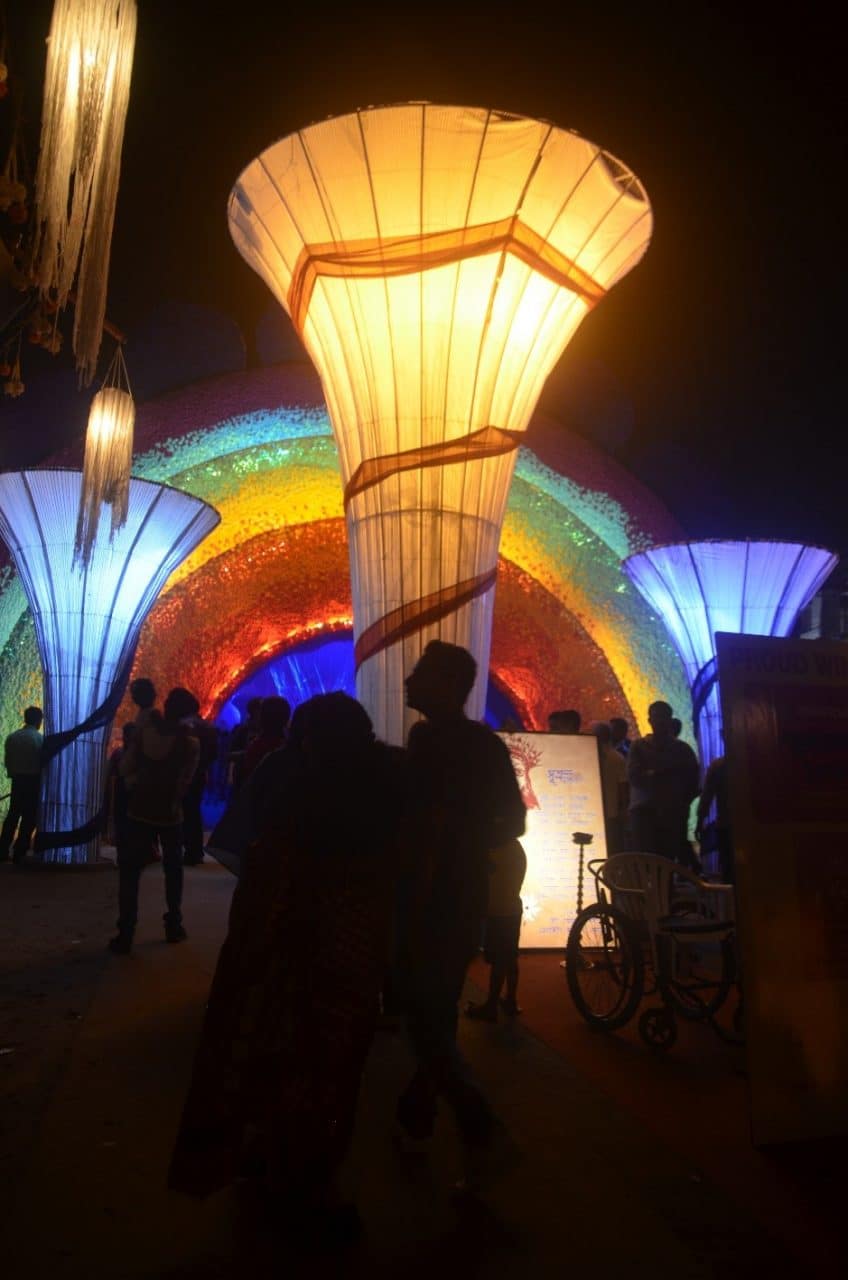
This was an insightful piece. Do publish more of such blogs that could introduce us to different cultures.